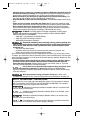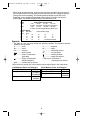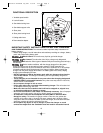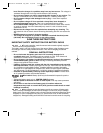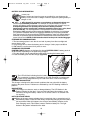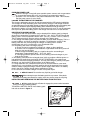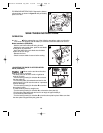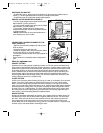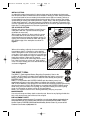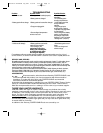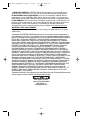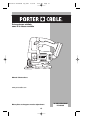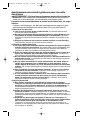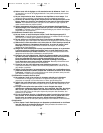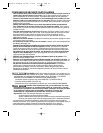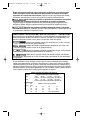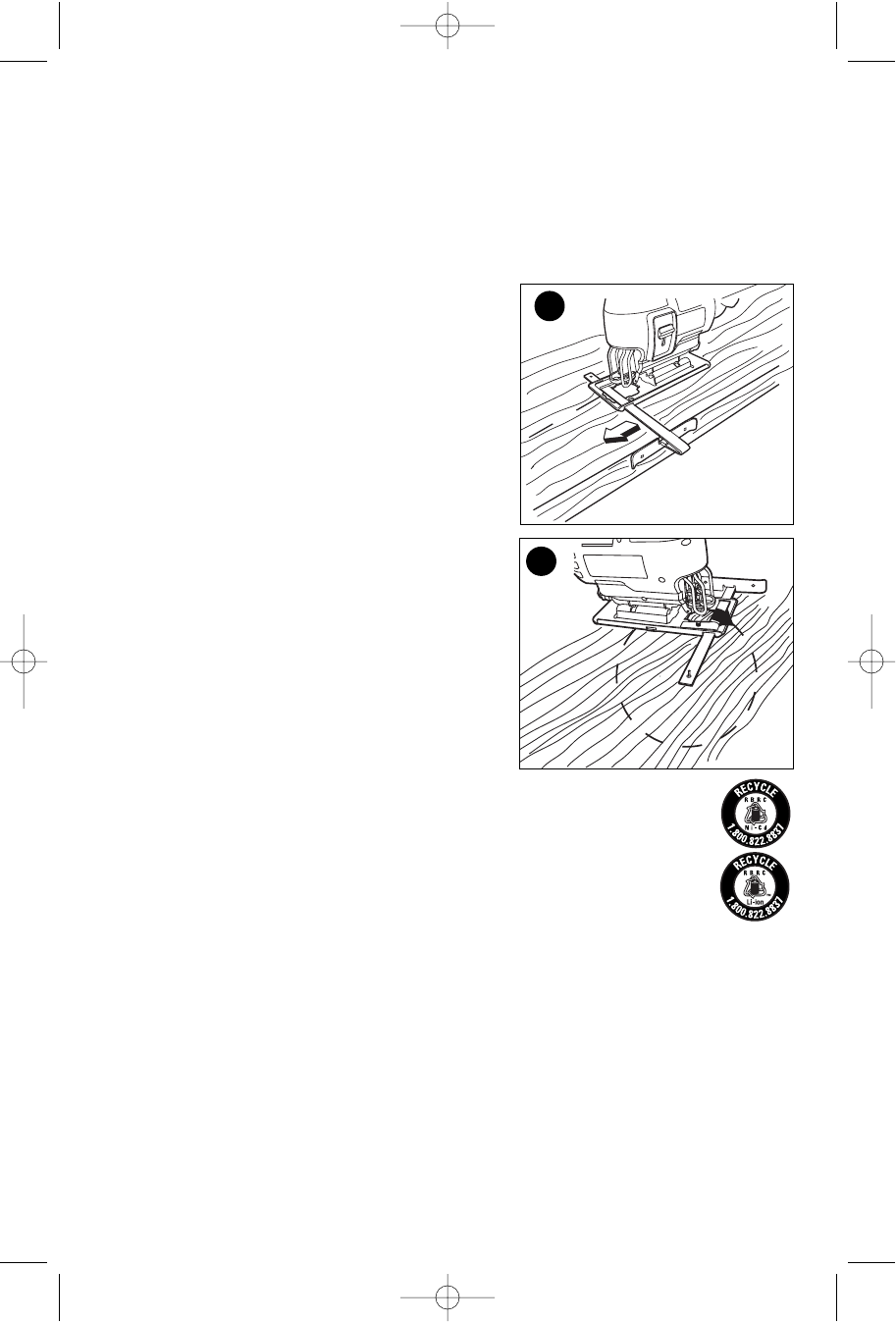
THE RBRC™ SEAL
The RBRC™ (Rechargeable Battery Recycling Corporation) Seal on the
LI-ION or NI-CD battery (or battery pack) indicates that the costs to recycle the
battery (or battery pack) at the end of its useful life have already been paid by
PORTER-CABLE.
RBRC™ in cooperation with PORTER-CABLE and other battery users, has
established programs in the United States to facilitate the collection of spent LI-
ION or NI-CD batteries. Help protect our environment and conserve natural resources by
returning the spent LI-ION or NI-CD battery to an authorized PORTER-CABLE service
center or to your local retailer for recycling. You may also contact your local recycling
center for information on where to drop off the spent battery.
RBRC™ is a registered trademark of the Rechargeable Battery Recycling Corporation.
MAINTENANCE
Use only mild soap and damp cloth to clean the tool. Never let any liquid get inside the
tool; never immerse any part of the tool into a liquid.
REPLACEMENT PARTS
Use only identical replacement parts. For a parts list or to order parts, visit our service website at
www.portercable.com. You can also order parts from your nearest PORTER-CABLE Factory
Service Center or PORTER-CABLE Authorized Warranty Service Center. Or, you can call our
Customer Care Center at (888) 848-5175.
12
METAL CUTTING
In cutting thin gauge sheet metals, it is best to clamp wood to the bottom of sheet metal;
this will insure a clean cut without the risk of vibration or tearing of metal. Always remember
to use a finer blade for ferrous metals (for those that have a high iron content); and use a
coarser blade for non-ferrous metals (those that do not have an iron content). Use a high
speed setting for cutting soft metals (aluminum, copper, brass, mild steel, galvanized. pipe,
conduit sheet metal, etc.). Use lower speed to cut plastics, tile, laminate, hard metals, and
cast iron. Spread a film of oil along the intended line of cut for easier operation and longer
blade life. For cutting aluminum, kerosene is preferred.
RIP & CIRCLE CUTTING
Ripping and circle cutting without a pencil line are
easily done with the a rip fence and circle guide
(available at extra cost).
When ripping, slide the rip fence under the screw
from either side of the saw. Set the cross bar at
desired distance from blade and tighten screw. For
ripping, the cross bar should be down and against
the straight edge of the workpiece as shown in
figure I.
When circle cutting, adjust rip fence so that distance
from blade to hole in cross bar is at the desired
radius and tighten screw. Place saw so that hole in
cross bar is over center of circle to be cut (drill hole
for blade or cut inward from edge of material to get
blade into position). When saw is properly
positioned, drive a small nail through hole in cross
bar. Using rip fence as a pivot arm, begin cutting
circle. For circle cutting, the cross bar should be up,
as shown in figure J.
I
J
90550119 PC1800JS Jig Saw 4/9/09 7:52 AM Page 12



